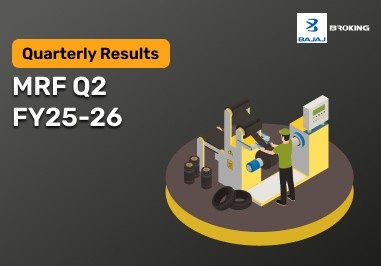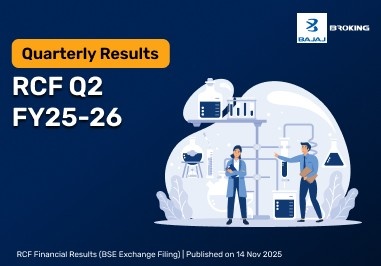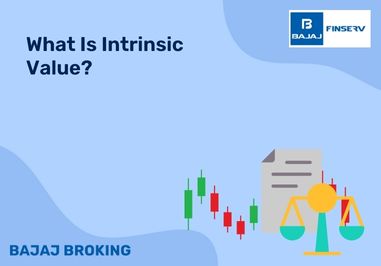F&O Ban: Definition and Purpose
Futures and Options (F&O) Ban is a regulatory action undertaken by stock exchanges to manage market volatility and safeguard the interest of both investor and traders. Stock exchanges impose F&O bans to address specific concerns and maintain market stability. .
The introduction of an F&O ban can potentially affect share prices, liquidity of the stock, and changes in its trading patterns as investors adjust their strategies.
Additional Read: Future and Options
How it works
A stock can be subject to an F&O ban when the total number of outstanding derivative futures or options contracts – also known as Open Interest (OI) – reaches 95% or more of the Market-Wide Position Limit (MWPL) set by the stock exchanges.
For instance, if the MWPL for a specific stock is 1000 contracts, and the open interest in futures or options contracts for that stock reaches 960 contracts, it triggers the initiation of the F&O ban period. Throughout this period, investors are restricted from initiating new positions in futures or options contracts related to that particular stock. However, traders who already hold contracts are permitted to close out their positions or execute their options contracts.
Typically, the F&O ban lasts for a single trading day. However, if the stock continues to surpass the MWPL, the exchange may extend the ban for additional trading days as deemed necessary.
The F&O ban remains in place until the open interest drops below 80%. No new positions are permitted during the ban period, though investors are free to close out existing positions. It's important to note that trading of the stock in the cash segment remains unaffected by such restrictions, as these limits apply specifically to futures and options contracts. Moreover, index F&O contracts are exempt from the ban period.
Additional Read: What is the F&O Ban List?
MWPL Calculation
Since the foundation of an F&O ban lies on the MWPL as a criterion, it is important to know how this metric is calculated. The calculation of MWPL limits takes into account a host of factors including the overall market capitalization, liquidity, and volatility of the underlying securities. These limits use the lesser value derived from two criteria:
either 30 times the average daily trading volume in the prior month in the cash segment, or
20% of the non-promoter-held shares, corresponding to the free float of the company, measured in share count.
For example, suppose company ABC has 1 Lakh shares, with non-promoters holding 50% (50,000 shares), indicating the free float. So, the MWPL for the company would amount to 20% of these free float shares, which means 20% of 50,000 shares equal to 10,000 shares.
Additional Read: Nifty 50 F&O Stocks: A Comprehensive Guide to Futures and Options Trading
The Impact of an F&O Ban
The imposition of F&O bans can significantly impact traders and investors in various ways:
Trading Restrictions: As mentioned earlier, you may face restrictions on initiating new positions or increasing existing ones in stocks placed under F&O ban. This limitation can hinder trading strategies and limit profit opportunities.
Increased Volatility: The announcement of an F&O ban often leads to heightened volatility in the affected stocks. Sudden price movements and liquidity fluctuations can make it challenging for you to execute trades effectively.
Risk Management: If you have open positions in stocks under F&O ban, you must carefully manage your risk exposure. You may need to adjust your stop-loss orders, hedge your positions using other instruments, or consider exiting your existing positions to minimise potential losses.
Market Sentiment and Perception: F&O bans can influence market sentiment, leading to cautious trading behaviour among investors. Negative sentiment surrounding banned stocks may spill over to other sectors or the broader market, impacting overall market performance. Moreover, the imposition of F&O bans can affect the market perception of individual stocks. Investors may perceive banned stocks as riskier or less attractive investment options, leading to changes in investment behaviour and portfolio allocations.
Impact on Derivative Markets: The ban on specific stocks in the derivative segment can affect trading volumes and liquidity in the futures and options market leading traders to reassess their trading strategies and adapt to changing market conditions.
Regulatory Compliance: Traders and investors must comply with regulatory guidelines and restrictions imposed during F&O bans. Failure to adhere to these regulations may result in penalties or disciplinary action by regulatory authorities.
Handling Open Positions
Managing your open positions during an F&O ban requires strategic planning to mitigate risks while ensuring compliance. Here are a few tips to effectively manage such scenarios:
Risk Management Techniques: Implement stop-loss orders to limit downside risk in volatile market conditions. Diversify portfolio holdings to spread risk and minimise exposure to individual stocks. Monitor regulatory updates and market developments to adapt risk management strategies accordingly.
Fundamental Research and Analysis: Direct your focus towards understanding the company's underlying financial health. Dive into key metrics such as earnings reports, debt obligations, and growth prospects. Amidst F&O restrictions, these fundamental aspects provide valuable insights into the stock's long-term viability.
Use Leverage Wisely: Be cautious while utilising leverage in volatile market conditions like an F&O ban. High leverage amplifies risk exposure, particularly during market uncertainties.
Delivery Obligations: Stay informed about delivery obligations for stocks under the ban, particularly in cash-settled contracts. Evaluate delivery feasibility based on the availability of underlying shares and settlement mechanism.
Stay Alert for Ban Reversals: Keep a close watch on regulatory developments. The lifting of an F&O ban often sparks increased trading activity, presenting opportunities for potential gains amidst heightened market liquidity and interest.
By adhering to these guidelines, traders can navigate open positions during F&O ban periods effectively, ensuring prudent risk management and compliance with regulatory requirements.
Conclusion
Futures and Options (F&O) Ban is a regulatory tool employed by stock exchanges to mitigate market risks and ensure fair and orderly trading conditions. While aimed at maintaining market stability, F&O bans can have far-reaching implications on share prices and investor sentiment, underscoring the importance of effective risk management and regulatory oversight.
Disclaimer: Investments in the securities market are subject to market risk, read all related documents carefully before investing.
This content is for educational purposes only. Securities quoted are exemplary and not recommendatory.
For All Disclaimers Click Here: https://bit.ly/3Tcsfuc















